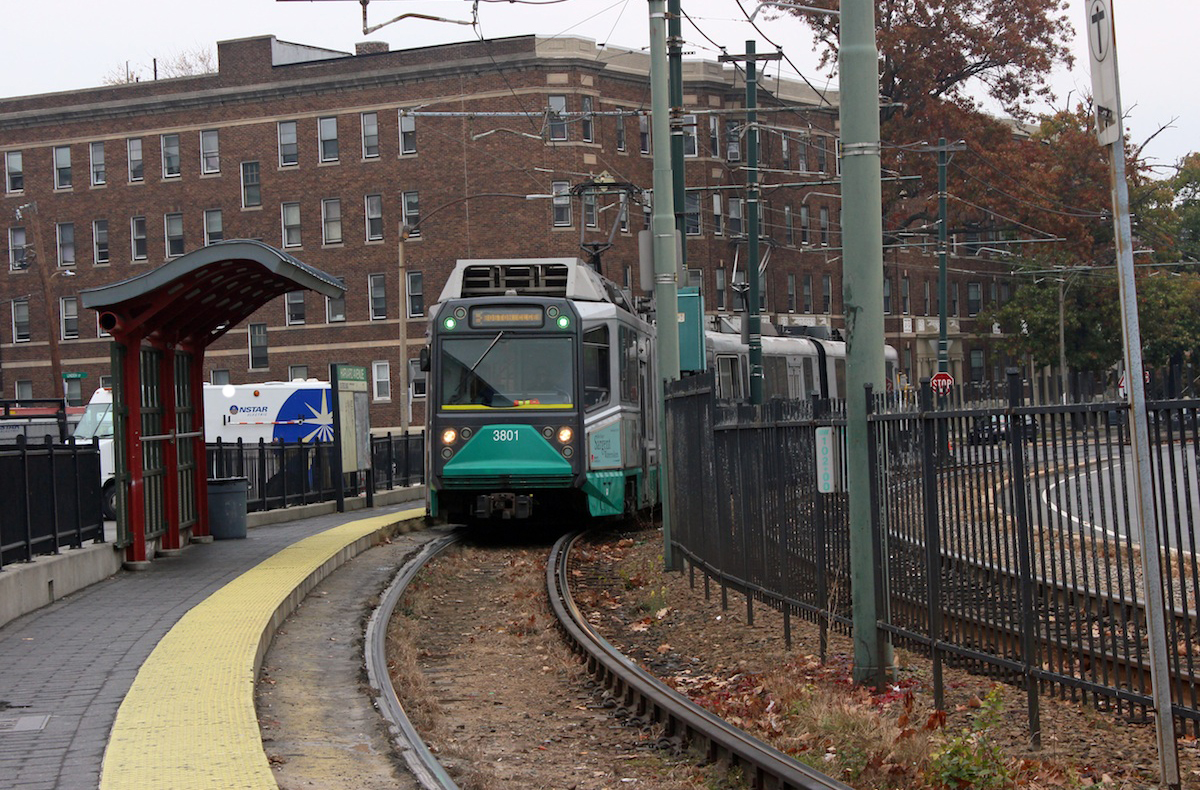MBTA Rolls Out ‘Phase One’ of Real-Time Tracking on the Green Line
Green Line riders will no longer need to stand on their toes and stare down the tracks, trying to predict when the next train will arrive—instead, their smartphones can do the work for them.
On Thursday, the MBTA announced “phase one” of their real-time Green Line trolley tracking project, which will allow passengers to simply tap into their handheld devices to find out just how many stops before the next train arrives, an amenity riders have been patiently waiting for for nearly five years.
“The Green Line serves a-quarter-of-a-million people every day, and for a lot of people who use it to get to work, [not having real-time updates] was a hole in the system,” said Kelly Smith, a T spokesperson. “We are really excited to finally bring this to customers, and see what developers do with this information.”
The MBTA is rolling out the new real-time tracking option in segments, Smith said. To start, on Thursday afternoon, the T will unveil tracking capabilities for above-ground trolleys only, after making pertinent data available to third-party apps created by local developers to deliver train location information to commuters.
“When you’re above ground on the Green Line, you will be able to see if the train’s four stops away, or if it’s two stops away,” said Dom Tribone, the MBTA’s special assistant for strategic initiatives.
Since 2010, real-time data has been accessible to software developers to integrate into smartphone apps for riders taking the Blue, Red, and Orange lines. Because of its “unique characteristics” and lack of location output, adding the Green Line tracking took longer, but transit officials were adamant that the project would happen eventually, despite the infrastructure obstacles.
“This is another example of why the decision for us to release data to developers continues to pay dividends. We did the ground work and made data available, but now it’s up to the developers so people can continue to use the apps they are comfortable and familiar with,” said Smith.
Tribone said that T maintenance workers have been toiling away for months on the inaugural piece of the project, outfitting the vehicles with brand-new GPS systems, making the above-ground tracking possible.
Tribone and officials from the agency will discuss the new feature during a special meeting at Boston’s District Hall on Thursday night, where they will “explain…and show [developers] how they think it will evolve” as they begin installing additional equipment into the underground tunnels as part of “phase two” of the project. That portion should be complete by 2015.
“The data is going into the same real-time feeds developers use for the apps. [We’re hosting] the ‘developers night’ because information will go to the public through the developers,” he said.
After testing out phase one, the T hopes to roll out time-prediction data for above-ground trains by December, which would give riders exact times of when the next trolley will pull up to an outside station, instead of merely showing how many stops away it is.
From there, the MBTA will begin installing an underground tracking system so that eventually riders will be able to follow and predict the precise arrival times of their trolleys at any of the 66 stops along the B, C, D, and E lines.
“Because this is the first time we are doing anything about the Green Line trains, our strategy here was to actually make things available to the public as soon as possible,” said Tribone of the plan to stagger the introduction of the tracking perk.
Smith said this is a “very big first step” that will lead to more big steps in the coming weeks, including at some point tapping into LED arrival signs that have been installed at underground Green Line stops. “It’s all very exciting, and a very big deal for customers,” she said.



